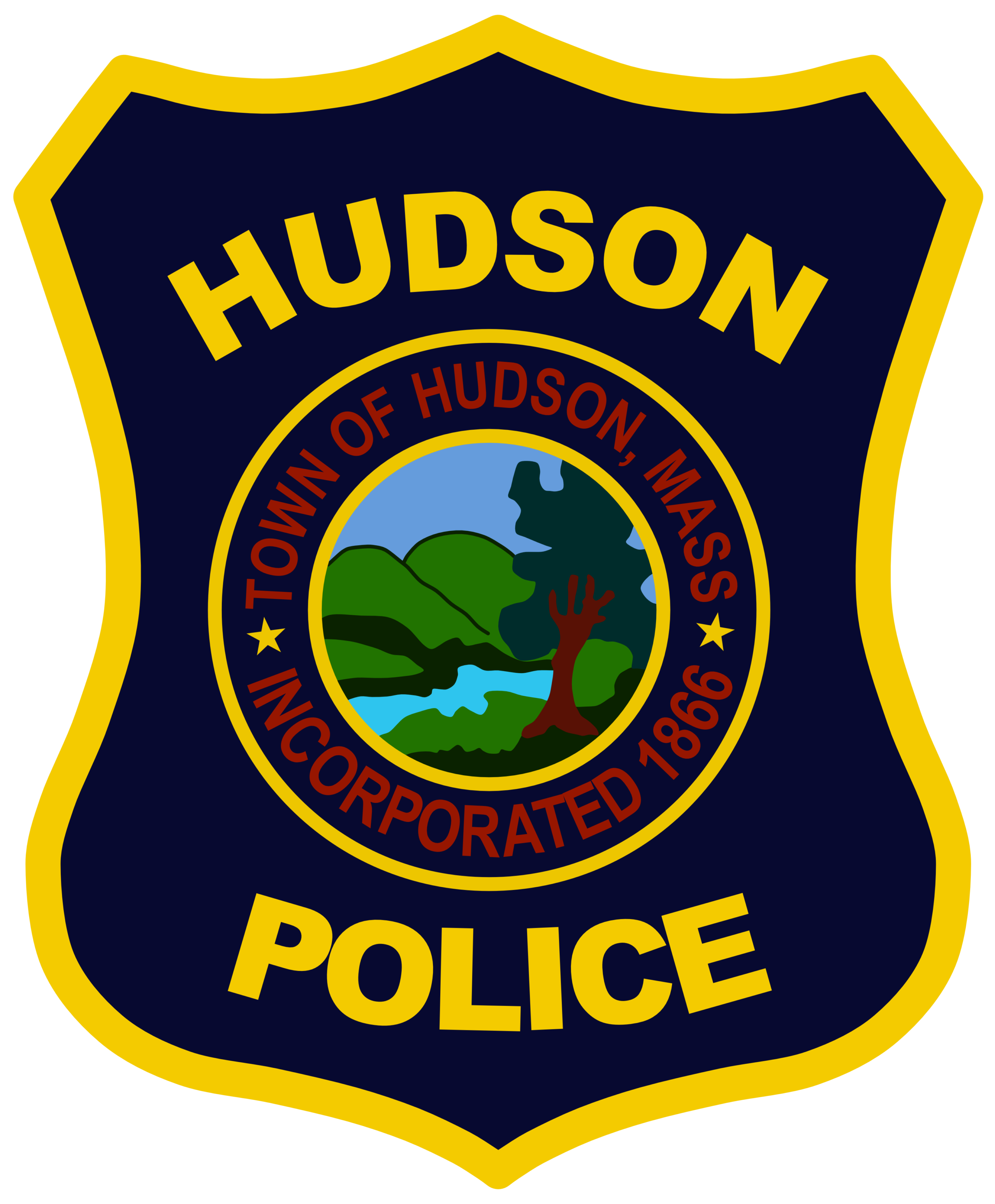Raising traffic safety awareness is a priority for the Hudson Police Department. By implementing traffic enforcement initiatives, offering tips on sharing the road, and participating in regional programs, the HPD is improving safety on the streets for pedestrians, bicyclists, and drivers on an ongoing basis. It’s important for everyone to share the road so we can all arrive to our destinations safely.
Pedestrian Safety
According to the Centers for Disease Control and Prevention (CDC), 445 pedestrians are injured across the country every day. Hudson is not immune to motor vehicle crashes involving pedestrians; there have been many incidents in recent years where pedestrians were seriously injured or killed. The Hudson Police Department would like to remind pedestrians and drivers alike to be careful when on the roads.
Some pedestrian safety tips include:
- Only cross the street at crosswalks.
- Always use the crosswalk signals.
- Walk on the sidewalk whenever possible.
- Wear reflective clothing or carry a flashlight in the evening or during the late afternoon hours in the fall and winter.
- When walking on the road, walk on the shoulder, and always walk facing the traffic.
- Put down electronic devices and always look both ways when crossing.
- Take your headphones out so you can hear what is around you.
- Make eye contact with drivers before crossing to make sure they are aware you are there. Do not assume they will stop just because you are in a crosswalk.
- Try to avoid anything that prevents you from being seen by drivers such as large trees, parked cars, buses, etc.
- Remember, as it can with driving, alcohol, and drugs can impair your safety when walking.
Police also remind drivers of the following:
- If you can not see clearly in the evening or in a storm, slow down so that you can keep your eyes out for pedestrians.
- If a vehicle is stopped in front of you, do not rush to pass. A pedestrian could be crossing.
- Pay close attention near schools and near neighborhoods as children could be playing outside.
- Stop for pedestrians in a crosswalk.
According to Safe Kids Worldwide, the fifth leading cause of injury-related death in the U.S. for children aged 5-19 is unintentional pedestrian injury. Therefore, it is important to speak with your children about the importance of being careful while walking near roads.
Motorist Safety
- Safety is a shared responsibility—motorists need to be watchful for pedestrians and bicyclists, drive at slower speeds, avoid distraction, and know the laws regarding when pedestrians have the right-of-way.
- Avoid distractions such as food, passengers, and using mobile devices. Talking and texting while driving is both dangerous and illegal.
- Be prepared to yield to pedestrians in crosswalks.
- Never pass a vehicle that is stopped for pedestrians.
Before making a turn, be sure the path is clear of any pedestrians or bicyclists. - Slow down in areas where you are likely to find pedestrians, such as near bus stops, schools, and playgrounds.
- Look carefully behind your vehicle for approaching pedestrians before backing-up.
- Keep an eye out for pedestrians at night that may be walking near or across the road.
- Give bicyclists a wide berth when passing and only pass when it is safe to do so. Under the new Vulnerable Road Users Law (Mass. General Laws c.90 § 14) motorists are required to give bicyclists 4ft of space minimum when passing and at a reasonable and proper speed.
Bicyclist Safety Tips
- Wear a helmet. It could save your life. However, helmets are fallible. Do not be fooled into a false sense of security. Riding as safely as possible is still very important.
- Avoid distractions such as listening to headphones or answering phones when riding.
- Obey all signs and signals. This includes stopping at stop signs and red lights.
- Under the Vulnerable Road Users Law (Mass. General Laws c.90 § 14) bicyclists are required to use a front white light and rear red light and rear reflector when riding at night. Use a light and reflectors when bicycling at night and be as visible as possible.
- Ride in the direction of traffic. Drivers may not be looking for you if you are riding the wrong way.
- Use all of your senses – watch and listen for cars, particularly at intersections and driveways.
